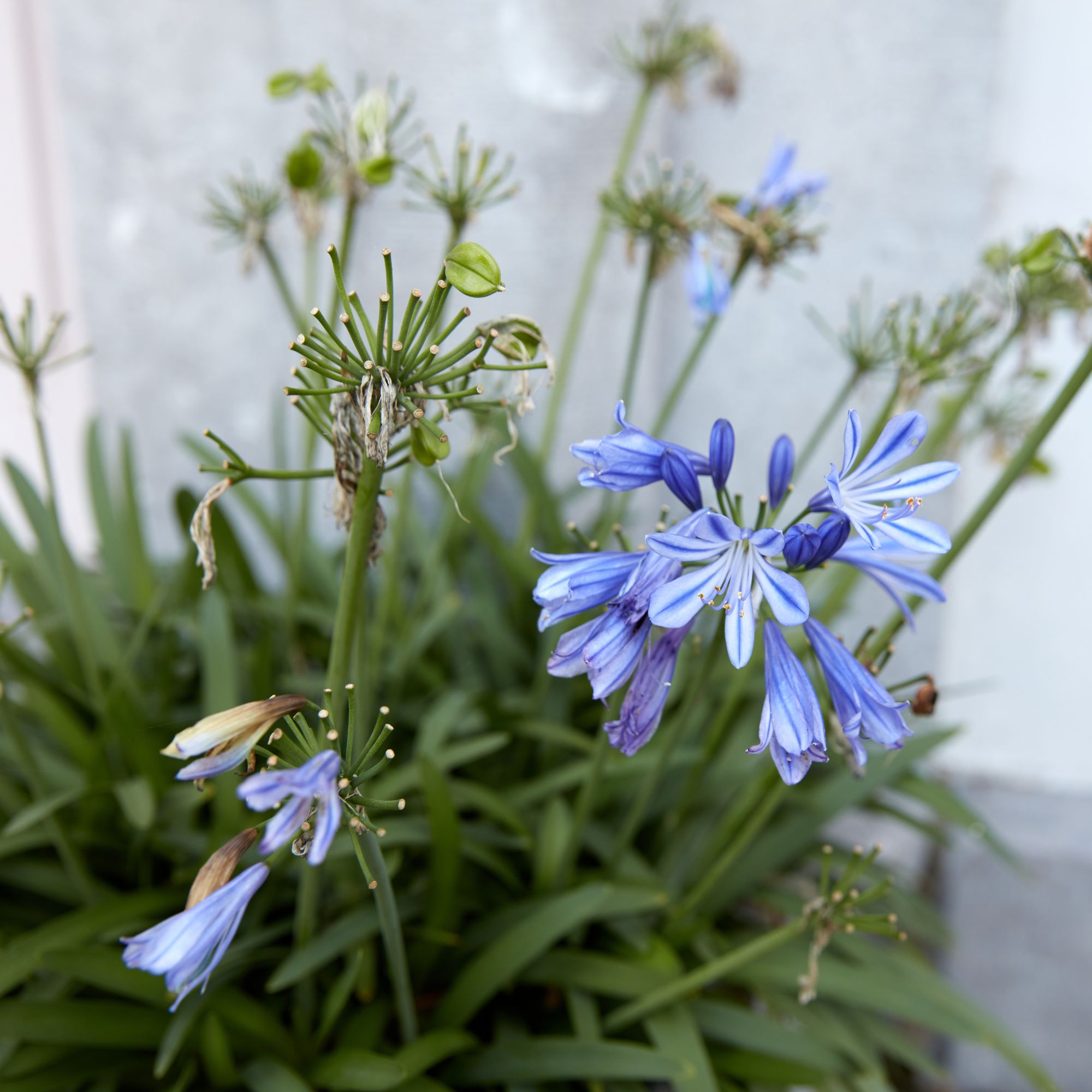When to deadhead agapanthus - experts reveal the exact time you should remove these spent flowers
It all depends on your plans for your plants


If your agapanthus is coming to the end of its flowering cycle, or you just want to promote more blooms, deadheading is a surefire way to do that. But choosing when to deadhead agapanthus is a difficult decision.
Yes, if you want to add agapanthus to your garden you need to understand that timing is everything. As well as knowing when to plant agapanthus, you also need to know when to deadhead it. After all, deadheading too early can result in lacklustre blooms, and deadheading too late can send them to seed.
But while garden experts all agree that knowing when to deadhead agapanthus is key, there are no hard or fast rules when it comes to this garden task. So, you have a little bit of flexibility.

Of course, you don’t have to deadhead agapanthus if you don’t want to. But if you decide that you do want to trim away the spent flowerheads, experts largely agree that it’s best to do this as soon as the flowerheads start to fade and look scruffy.
Typically, agapanthus flowers for around six weeks from mid-summer to early autumn, so you should expect to add this task to your list of jobs to do in the garden in September or early October by the time that they’ve finished blooming.
This is echoed by Morris Hankinson, director of Hopes Grove Nurseries, who says, ‘During late summer or early autumn, your agapanthus will start to look faded and wilted, and this is the best time to deadhead agapanthus.’

Morris Hankinson is the founder and managing director of Hopes Grove Nurseries Ltd, the UK’s only specialist grower-retailer of hedging plants. He established the thriving business in 1992, shortly after graduating with a Commercial Horticulture Degree from Writtle College, Essex.

That’s not to say that you can’t deadhead earlier than that if you spot struggling flowers, though. As gardening expert Calum Maddock at HomeHow.co.uk explains, ‘Deadheading your flowers early on in the summer can encourage your plant to grow more – meaning you can enjoy a longer blooming period.’
Sign up to our newsletter for style inspiration, real homes, project and garden advice and shopping know-how
But if you want to avoid any deadheading mistakes, it’s probably best to wait until the flowers look visibly spent before whipping out your secateurs. And Morris advises, ‘To remove the spent bloom, cut the flower stalks down to the base of the plant. This encourages the plant to focus its energy on root and foliage growth rather than producing seeds. It also helps its appearance by keeping the plant looking healthy and tidy.’
However, the rules are different if you choose not to deadhead agapanthus - and many gardeners choose this path when their plants start to fade. After all, there are so many plants that don’t need to be deadheaded.

In the case of agapanthus, the spent seedheads can not only add visual intrigue and height to your garden, but leaving the agapanthus to go to seed can also allow you to collect the seeds and grow more for free.
So, while you can deadhead agapanthus during the summer and when the flowers start to fade, you can also leave the plant alone indefinitely. Alternatively, you could wait until the end of winter to finally chop down those giant flowerheads. The deadheading world is your oyster when it comes to this pretty plant.
What you'll need
FAQs
What to do with agapanthus when they finish flowering?
When agapanthus has finished flowering, you then need to choose whether you want to deadhead agapanthus or not. Both are valid options, and both have their advantages and disadvantages.
Whichever one you choose, however, you should try and leave the foliage intact for as long as possible. By leaving the foliage to die down naturally, you can give it the chance to absorb as much sunlight and as many nutrients as possible to feed the bulb and store energy for next year.
How many years does it take for agapanthus to flower?
This all depends on how you grow agapanthus. If you choose to grow agapanthus from seed, it may take up to two years for your plant to flower.
Because of this, most people choose to grow agapanthus from bare-root plants, as this is often a much quicker route to blooms. When planting agapanthus from bare-root plants, you should expect flowers within 1-2 years.
For the most part, agapanthus spends the first year of its life establishing itself and absorbing as much energy as possible. So, you may find that all of your agapanthus plants flower in their second year.
Now you know when to deadhead agapanthus, it’s time to start cleaning your secateurs.

Lauren Bradbury has been the Content Editor for the House Manual section since January 2025 but worked with the team as a freelancer for a year and a half before that. She graduated with a Bachelor’s degree in English and Creative Writing from the University of Chichester in 2016. Then, she dipped her toe into the world of content writing, primarily focusing on home content. After years of agency work, she decided to take the plunge and become a full-time freelancer for online publications, including Real Homes and Ideal Home, before taking on this permanent role. Now, she spends her days searching for the best decluttering and cleaning hacks and creating handy how-to guides for homeowners and renters alike, as well as testing vacuums as part of her role as the Ideal Home Certified Expert in Training on Vacuums, having spent over 110 hours testing different vacuum models to date!


